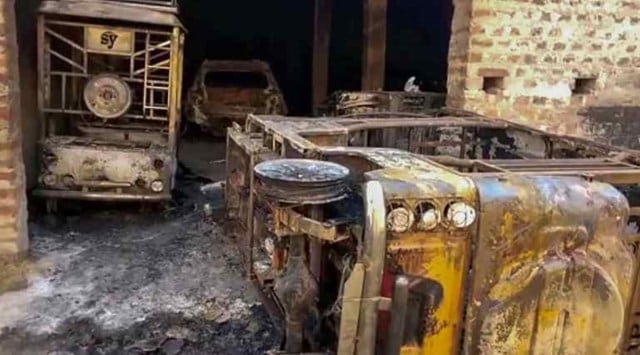
Written by Ali Fraz Rezvi
On March 22, when Bihar was celebrating the 111th anniversary of its statehood, flags and banners proclaiming a “Hindu Rashtra” were unfurled in Darbhanga — citing the Hindu New Year. The police stated that this was done by a few anti-social elements to disturb the state’s harmony. Several FIRs – with four named and several unnamed accused — were registered and the Darbhanga district secretary of the Vishwa Hindu Parishad, Rajeev Prakash Madhukar, was arrested on March 25.
The sitting BJP MLA from Darbhanga, Sanjay Saraogi, defended the flags. He accused the Bihar government and administration of “appeasement” of a particular community and alleged that they have turned hostile to Hindus.
This incident, after cases of mob lynching in Bihar, worried many people in the state. Yet, these fears remained in the background and people were calm because the BJP-JDU government was recently replaced by a “secular” government.
But, on the day of Ram Navami, Bihar experienced one of its worst nightmares in recent memory. Mosques, madrasas, homes, vehicles and shops were looted and torched in Bihar Sharif and Sasaram. Around 77 people have been arrested till now and the Bihar police insist that the situation is under control. Even if that is so, a lot has been lost. Madrasa-e-Aziziya, one of the prime targets of communal forces, was one of the oldest educational institutions in Bihar Sharif. It was incinerated along with the approximately 4,500 rare books and manuscripts it housed. The police, reportedly, were nowhere to be seen.
The people of Bihar trusted their government and Chief Minister Nitish Kumar. They did so once earlier too, in 1946, when Shri Krishna Sinha headed the government and there were communal riots in the state. The British Indian Army’s Lieutenant General Sir Francis Tuker, wrote in his book While Memory Serves that things were looking dark in Bihar on the eve of the violence. “The Bihar massacre had begun. Of all the terrible doings of 1946, this fearful carnage was the most shocking. Its most dastardly side was that great mobs of Hindus turned suddenly, but with every preparation for the deed, upon the few Muslims who had lived and whose forefathers had lived in amity and trust all their lives among these very Hindu neighbours. It has never been ascertained who was the organising brain of this well-laid widely-planned plot of extirpation. All that we do know is that it went to a fixed plan and schedule. Had it not been so, such large mobs, fully armed with prepared weapons, would never have collected in the time and moved with such obvious, fiendish intent from victim to victim.”
Bihar Sharif — in 1946 just as in 2023 — was one of the most affected areas. Looting and arson were widely reported by Colonel Venning, who was brought in to bring the situation under control. Tuker notes that it was widely believed that the riot was funded by the rich merchants of Bengal as revenge for the loss caused to their businesses in August 1946 after Direct Action Day, and was thus a direct attack on the property, income and wealth of Bihari Muslims.
The Muslim League claimed that around 30,000 people were killed while British sources provide a figure of 8,000-10,000 people.
Bihar managed to emerge from this history and wove a resilient, secular social fabric. There have been attacks on this fabric since then and now, more than ever, it is necessary to protect it.
The violence that unfolded after the Ram Navami processions brought back memories of a disturbing past. Bihar and its people have suffered greatly at the hands of communal forces. They do not want another 1946.
The writer works at Anjuman-i-Taraqqi-i-Urdu (Hind). Views are personal